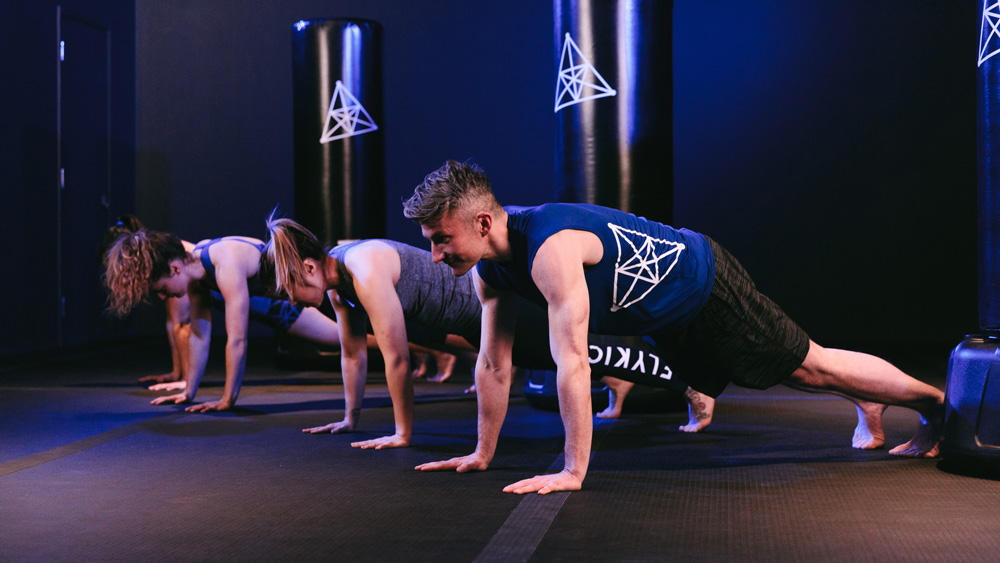What Is Tabata Training And Why You Should Try It
Get ready for the toughest four minutes of your life

Back in 1996 if you mentioned HIIT most people would probably have assumed you were talking about an Oasis record rather than an exercise style, but it happens to have been the year one of the most well-known branches of HIIT was born: Tabata training.
What Is Tabata Training?
Tabata is named after Professor Izumi Tabata, who conducted a study into the effects of HIIT on aerobic and anaerobic fitness, and how it compared to steady-state training.
The original study used highly trained athletes, divided into two groups. One did five sessions of steady-state training a week, while the other did four HIIT workouts plus one steady-state workout.
The HIIT involved 20-second bursts of very intense exercise followed by ten seconds of rest, repeated eight times for a total of four minutes. This four-minute blast was preceded by a five-minute warm-up and followed by a two-minute warm-down, with all the exercise done on a stationary bike. During the intense sections the athletes had to maintain a pace of over 85RPM or they were disqualified.
At the end of the study, both groups saw rises in their VO2 max (basically, how efficiently the body can use oxygen), but those who had used the Tabata protocol also improved their anaerobic fitness.
Since then Tabata training has come to mean any workout which is broken up into 20 seconds work and ten seconds of rest, repeated for four minutes. From there people often add in more rounds, building up the workout in four-minute blocks.
It’s also used today as an effective way to burn fat (but not lose weight, this isn’t a protocol for beginners, remember). Why? Because just ten seconds of recovery after 20 seconds of lung-busting effort isn’t enough time to completely get your breath back, so your heart rate stays high and the accumulated fatigue quickly adds up to shock your body into freeing up the energy supplies tucked away in your fat cells. This means that while you may not burn that many calories during the actual four minutes of training, you body will continue to burn calories at a higher rate at rest during the following hours. Some studies indicate your metabolism is boosted for up to 24 hours after a HIIT session.
Sign up for workout ideas, training advice, reviews of the latest gear and more.
How To Do Tabata Training
Tabata is not a workout for fitness beginners, because it’s vital that the 20-second bursts of work are done at maximum intensity. In theory, it can be applied to all forms of exercise – you can do Tabata running, cycling, bodyweight exercises, weight training or anything else. However, it’s best done with exercises that allow you to increase the intensity quickly and safely. So start with work on a cardio machine or simple bodyweight moves like press-ups or unweighted squats.
To stress the most important point again, if you’re doing Tabata right it will feel like absolute torture for four minutes. You shouldn’t be able to talk during the intense bursts.
You can build workouts around the Tabata principle in four-minute blocks, changing the exercise after each four-minute stint. For example you could do four minutes on the rower, four of press-ups, four of jump squats and four on a stationary bike.
You don’t want to make the overall workout too long, though, because this will probably mean you’re unable to maintain the intensity. It’s also important to make sure you warm up before your first 20-second stint at max intensity.
20-Minute Full-Body Tabata Workout
If you’re ready to try some Tabata, this 20-minute workout from Maximuscle training expert Dan Lambert that targets muscles all over the body is a great place to start.
“When I use Tabata I like to bounce between two compound exercises – one upper body and one lower body – to increase heart rate, distribute blood around the whole body and increase lactate production in the large muscle groups,” says Lambert.
Complete 20 seconds of exercise A, rest for ten seconds, then complete 20 seconds of exercise B and rest for ten seconds. Repeat this pattern four times for one full Tabata and then move on to the next pair of exercises. Complete five rounds with five different pairs of exercises in total.
1A Burpee
Stand with feet shoulder-width apart. Drop and place your hands on the floor just outside of your feet. Keeping your core engaged, quickly jump your feet back so you end up in the press-up position, then jump your feet back to between your hands. Jump up explosively and clap your hands overhead.
1B Heavy medicine ball slam
Stand with your feet shoulder-width apart with a heavy medicine ball between and slightly in front of your feet. Squat down to pick up the medicine ball, keeping your back straight and holding the medicine ball at the sides so your palms are facing each other. Return to standing, then bring the ball above your head. Squeeze your glutes for extra force and, hinging at the hips, slam the ball into the ground with all your might.
2A Weighted walking lunge
Hold a dumbbell in each hand by your sides with palms facing inward. Keeping your back straight and chest up, step forwards and slowly lower your body until your knees are bent at 90°, keeping your torso upright. Hold this position for 1-2sec and squeeze your glutes. Step forwards with the other foot and repeat the move. Ensure your knees don’t go too far forwards beyond your toes because this can damage the joint.
2B Dumbbell thruster
Hold a dumbbell in each hand above your shoulders with palms facing inward (a neutral grip). Squat down until your hamstrings are parallel to the floor, keeping your back straight and the dumbbells in position. Push through your heels to return to standing and press the dumbbells overhead.
3A Press-up
Assume a face-down position on a gym mat. Place your hands on the floor in line with your shoulders but slightly more than shoulder-width apart. Without flaring your elbows outward, lower your body until your chest is almost touching the floor, then press back up to the start, again without flaring your elbows. Keep your glutes squeezed and your hips in line with your torso and shoulders.
3B Jump squat
Stand with your feet shoulder-width apart and place your hands behind your head. Squat down until your legs are parallel with the floor, squeezing your glutes at the bottom. Explode back up and off the ground by driving through your heels. Keep your chest elevated and back straight throughout.
4A Assisted pull-up
This can be performed either on an machine-assisted station or with a strong resistance band tied around a pull-up bar. Hold the pull-up bar with a overhand (pronated) grip just wider than shoulder-width. Place both knees on the seat or band until your body is at full length. Contract your lats and pull your body up until your chin reaches the level of the bar.
4B Kettlebell swing
Stand with your feet slightly wider than shoulder-width apart. Hold a kettlebell in front of you with both hands using an overhand grip. Hinge at your hip, bringing your glutes back while keeping the back straight. Explode forward to swing the kettlebell up until it reaches chest height, keeping your arms outstretched.
5A Renegade row with press-up
Adopt the top press-up position, gripping two dumbbells that are resting on the floor. Perform a press-up, then lift one dumbbell straight up into your midriff, lower it and then row the other dumbbell up in a similar fashion, ensuring your hips remain in line with your torso.
5B Mountain climber
Start in a top press-up position. Bring one knee towards your chest, then as that leg returns to the start position bring the other knee up towards your chest. Repeat this movement pattern pattern as quickly as possible. Ensure your core is engaged to keep your balance .
See related
- The Home Tabata Workout That Will Take Things Up A Gear
- Burn Fat Fast With Leon Scott’s HIIT Workouts
- Interval Training For Runners
20-Minute Bodyweight Tabata Workout

If you’re keen to give Tabata a go but don’t have the equipment needed for the workout above then try this bodyweight session from Ben Leonard-Kane, the founder of fitness studio Flykick, instead. The 20-minute workout hits muscles all over the body, and although you don’t need weights for it you should now have learned enough about Tabata to know that it’s not going to be easy.
After a warm-up the workout moves through four four-minute circuits following the Tabata protocol, with each set focusing on a different area. Circuit 1 targets the lower body with jump lunges and prisoner squat jumps, and circuit 2 the upper with dips and press-ups. Circuit 3 is all about ramping up your heart rate with burpees and high knees to work on your cardiovascular fitness, while circuit 4 hits the core, using a V-sit and single-leg jackknife combo.
It’s a simple but brutally effective season you can do almost anywhere (anywhere you won’t disturb the people downstairs with four minutes of jumping, that is), so next time you have 20 minutes and energy to spare, make sure to give it a go.

Nick Harris-Fry is a journalist who has been covering health and fitness since 2015. Nick is an avid runner, covering 70-110km a week, which gives him ample opportunity to test a wide range of running shoes and running gear. He is also the chief tester for fitness trackers and running watches, treadmills and exercise bikes, and workout headphones.
